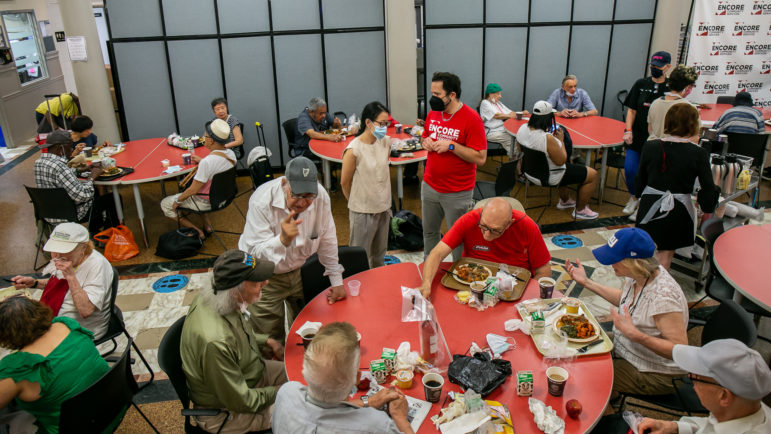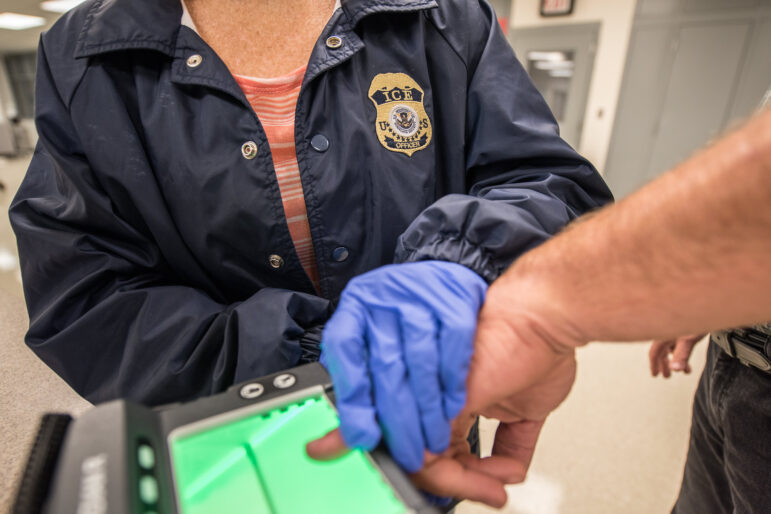Almost every day there’s a new frantic message on Josh Zinner’s voice mail at the Foreclosure Prevention Project in downtown Brooklyn. The typical call is from a panicked outer-borough homeowner who recently signed a loan that the friendly man at the door said would save money and free up cash to fix the leaky roof. He even said overdue credit card and hospital bills could be folded into a single handy installment. Don’t worry about the fine print, homeowners are told. But astronomical interest rates, hidden fees and huge payment obligations, sometimes even an agreement to forego the right to sue are buried there–the classic hallmarks of predatory lending.
Each year, Zinner and his colleagues at the project, part of South Brooklyn Legal Services, represent hundreds of homeowners in low-income neighborhoods where predatory lending has become epidemic. The lawyers do their best to help people keep their homes, forestalling foreclosure by cobbling together legal arguments from obscure federal banking and state fraud law.
Project staff have even allied with activists from groups like ACORN and taken their case to the streets, protesting in front of the offices of offending mortgage companies. With funding from the federal government and private foundations, other organizations have been counseling borrowers on how to avoid getting burned and even buying bad loans from lenders to fight foreclosures.
But none of these efforts, by Legal Services and virtually every affordable-housing, anti-poverty and consumer advocate across the state, has made a dent in predatory lending. To fight wily lenders, activists realized, they needed more than just sympathetic segments on the 5 o’clock news. New York would have to become the next North Carolina.
In 1999, the Tar Heel State passed the nation’s first comprehensive anti-predatory lending legislation, a law that gives victimized homeowners the right to keep their homes and sue corrupt lenders. Now a massive coalition of consumer, housing and banking groups intend to bring the same protections to New York with the Responsible Lending Act, a state bill that seeks to define and stop abusive lending.
It’s still a long, long way from law. In the past two years, more than 20 states and cities have sought to pass legislation similar to North Carolina’s. Only Chicago and Washington, D.C., have been successful, and both were city ordinances with little enforcement power. Elsewhere, the banking and mortgage industry has massed the full power of its lobbying machine and quashed every regulatory effort.
The New York activists are already staging an end run around the banks. They’ll be blaring the news that predatory lending is an equal opportunity scourge, with victims in heavily Republican upstate as well as in New York City. Lobbying powerhouses like the American Association of Retired Persons (AARP) have joined community activist groups to wage a public relations war and turn predatory lending into an apple pie issue for legislators. Their challenge will be to counter the banking industry’s public stance–that advocates are well-meaning but misguided zealots whose efforts will make it harder for the poor to borrow money.
The financial lobby suggests that practices the Lending Act would ban–including hidden fees and obligations–are so essential that losing them will make lending to high-risk borrowers bad business. The proposed law itself, however, wouldn’t touch the most obvious tool banks have for profiting from lending to poor people: charging hefty interest rates. As long as a bank doesn’t engage in any of the practices specifically prohibited [see “House Rules”], a homeowner won’t have a case.
Just to make sure that message is heard loud and clear, advocates who normally fight for lower interest rates for poor people are emphasizing a distinctively conciliatory point: that high-interest loans are acceptable, because they provide badly needed access to credit. “Even if a loan is characterized as high-cost, it doesn’t mean it’s bad,” explains Josh Silver of the National Community Reinvestment Coalition. The proposed law, he says, “just means you can’t do other abusive things, too.”
Some 70 groups are backing the effort, including the National Federation of Community Development Credit Unions, South Brooklyn Legal Services, the Neighborhood Economic Development Advocacy Project, New York Public Interest Research Group and Citizen Action as well as ACORN, which recently embarked on a preemptive strike of its own against predatory lending (see “Strange Bedfellows,” page 6).
But the AARP, which claims 2.5 million members statewide and promises an intense grassroots lobbying effort, is their ace in the Albany hole. “Older people are cash-poor and equity-rich,” says Bill Ferris, a lobbyist for AARP in New York. Nationally, the organization has become a leading player in the fight against predatory lending, which disproportionately targets the elderly.
AARP scored a big consumer win last year with a state law allowing New Yorkers to block telemarketing calls. State Senator George Maziarz of Lockport, a Republican who chairs the committee on aging, was that bill’s biggest champion. His support was essential in the Republican-controlled State Senate, not usually the friendliest turf for consumer legislation. This winter, Maziarz’ office was New Yorkers for Responsible Lending’s first stop as they shopped their model bill in Albany.
They appear to have made an impression. “I think I can support the bill,” Senator Maziarz tells City Limits . “It’s clearly something we have to act on.” Predatory lending has spread to parts of the state with political clout, and that can only help the effort to stop it. “I had always seen it as a downstate problem,” says the senator. “But unscrupulous lenders are bringing it into Rochester, Buffalo and even the rural areas.”
_______
Predatory lending has grown in recent years alongside an astronomical increase in lending to borrowers with poor credit, what the industry calls “sub-prime” lending. (Activists call these “high-cost” loans.) From 1993 to 1998, the number of sub-prime home loans grew by 760 percent, compared with a 38 percent jump in regular home loans.
Helped by Reagan-era deregulation of the banking industry, sub-prime lending has increased because it’s so lucrative. It’s profitable not just for the smaller mortgage companies that deluge low-income communities with flyers, door-to-door salesmen and telemarketers, but also for the giant banks that buy the high-interest loans on secondary markets, which operate on volume. When the larger banks purchase loans in bundles, predatory and nonpredatory alike, they don’t ask questions. Later, they plead ignorance.
In recent years, the distinction between shady and legitimate lenders, always blurry, has disappeared. Big banks, through mergers and acquisitions, have added profitable divisions that specialize in sub-prime lending. Last fall, for instance, Citicorp purchased a scandal-plagued sub-prime lender, Associates First Capital Corporation. This March, the Federal Trade Commission charged both with practices like lying to borrowers and packing loans with unnecessary fees.
The big banks don’t like to admit it, but they profit massively from predatory lending, and that fact drives their fierce lobbying efforts around the country. Whether they have sub-prime divisions or just make money on secondary markets, anti-predatory lending legislation hurts the bottom line of even the most white-gloved banks.
Dan Immerglock of the Woodstock Institute in Chicago, a veteran of several local predatory lending fights, has seen the national Mortgage Bankers Association of America send what he calls “SWAT teams” to defeat bills in state after state: “They’re smart and well-organized and determined to weaken protections for all lending.”
Banks will even turn on their own. In Illinois, three local banks issued a joint public letter supporting a bill similar to North Carolina’s, observing that legislation that removes the bad guys from the sub-prime market could only help ethical lenders. According to Immerglock, the Illinois Bankers Association first tried to block the release of the letter, then banned the dissident bankers from association meetings.
_______
The New York activists agree that pushing shady lenders out of business will ultimately be good business for banks, and they have already begun meeting with big financial institutions trying to convince them of that. Such tactics worked in North Carolina, according to David Beck, spokesperson for that state’s Coalition for Responsible Lending. Says Beck, “Eventually every major lending group in the state ended up supporting the bill.”
So far, though, the New York coalition’s efforts to woo lenders have had mixed results. None has yet backed the bill, “but we haven’t gotten the door slammed in our face either,” says Russ Haven of NYPIRG. “We hope they will recognize they can make a profit without driving people to foreclosure.”
Indeed, in all the fights since North Carolina’s, such pleas to bankers have gone nowhere. “The North Carolina folks had the benefit of being first,” Immerglock said. “The industry didn’t realize how strong the bill was. They won’t make that mistake again.”
New York’s financial industry appears to be taking no chances. “We think additional legislation is unnecessary,” says Roberta Kotkin, general counsel for the New York Bankers Association. The trade group, which represents 135 banks and mortgage companies across the state, contends that the state banking code is strong enough. New York already bans most predatory lending practices, and the law allows the state Banking Department to investigate lenders and pull licenses if necessary. At the same time, it offers consumers no direct protection or recourse if they’re about to lose their home.
Kotkin adds a warning for New Yorkers: “This legislation can end up having the unintended impact of reducing credit to the neighborhoods.” In North Carolina, however, activists say that nearly a year after their bill went into effect, there is no evidence that lending in poor communities is slowing down. “It’s pretty early in the game, but we haven’t seen a drop in access to credit for borrowers,” says Beck. “To paraphrase Mark Twain, the death of lending in North Carolina has been greatly exaggerated.”








